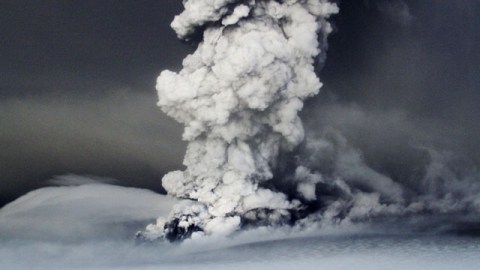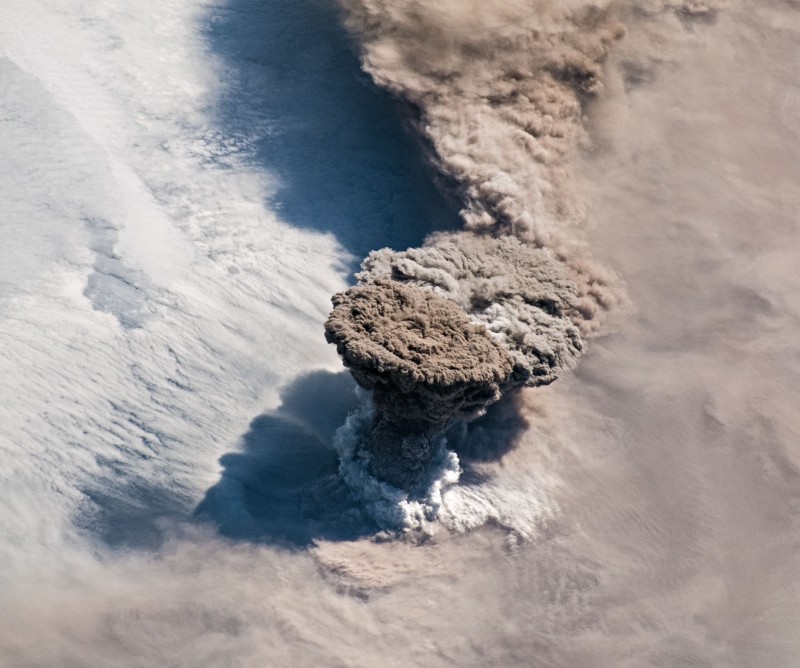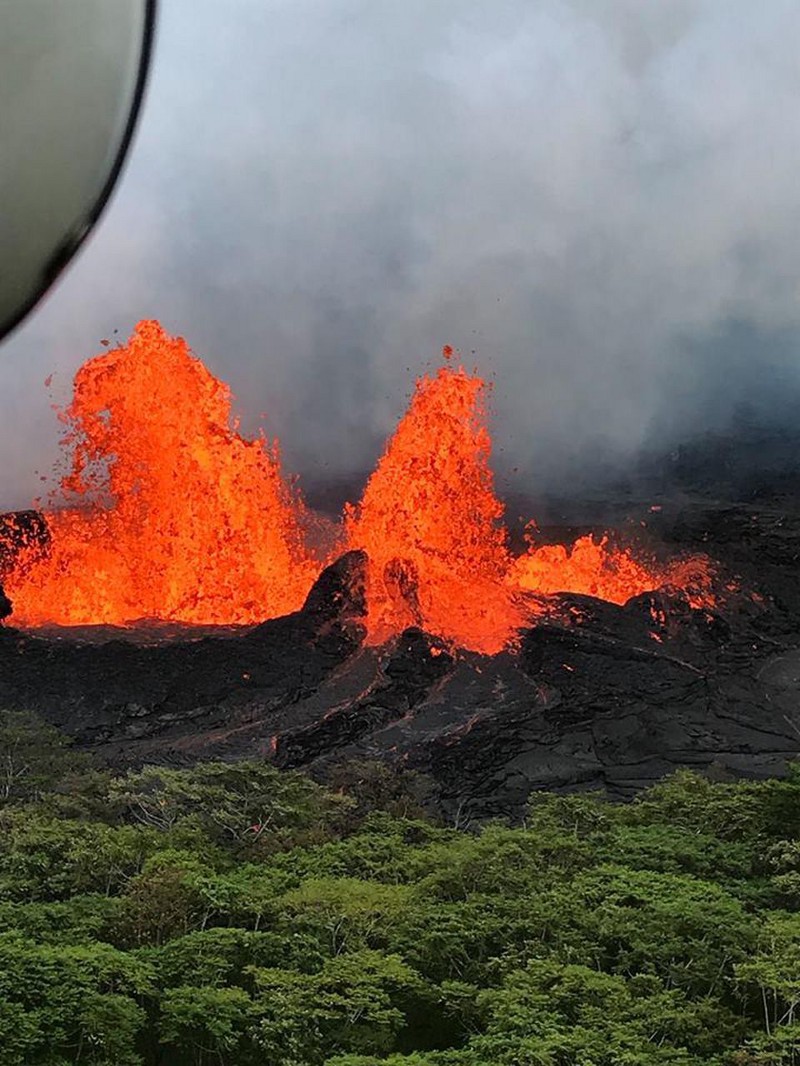Keeping tabs on the Grímsvötn eruption as the ash spreads towards Europe

We’re now into the third day of the new eruption from Grímsvötn in Iceland. So far, the ash from the eruption has fallen only on Iceland and the North Atlantic Ocean as the plume remains ~6-9 km / ~20,000-30,000 feet tall (down from close to 15-20 km / 50-60,000 feet over the weekend). significantly so on parts of Iceland (Icelandic), reaching as far Reykjavík (albeit in µg/m3 concentrations) and causing the closure of the largest airport on the island, but flights should resume today. However, it is beginning to look like some flights in the United Kingdom and Ireland might begin to be disrupted by the ash as early as tomorrow if the volcano continues to erupt and the VAAC models are accurate. The latest ash model from the London VAAC (see below) shows the ash drifting over Greenland and also sweeping back down to the south towards northern Europe. Even so, the likelihood of a widespread airspace closure over all of Europe is much lower than in last year’s Eyjafjallajökull eruption, for both volcanological and political reasons (I suspect).
UPDATE 12:30 PM (Eastern): It looks like at least 36 flights were cancelled in Scotland by Loganair due to the encroaching ash. However, the UK government says it is “better prepared” for this ash than last year. Some airspace over Greenland is also closed as well.
UPDATE 2:15 PM (Eastern): This is a pretty amazing animated GIF of the opening stages of the eruption. Textbook plume development and spreading. {Thanks to Luis for posting it in the comments}. To go with that, check out the satellite images of the ash plume punching through the clouds.
UPDATE 2:45 PM (Eastern): Looks like the ash from Grímsvötn might curtail President Obama’s trip to Ireland and change travel plans for Barcelona as it spreads over British and Irish airspace. There also appears to be some dispute right now about the use of the British aircraft that could measure ash in the air. Of course, all this talk of potential flight disruptions has spooked investors who sold off airline stocks in fear of more turmoil for the industry (if only someone would listen to the volcanologists). There is also some great video of the ash in the Icelandic town of Kirkjubaejarklaustur (yes, indeed) that show just how thick the ash fall was during the height of the eruption. Some of the satellite images of the eruption show just how big the plume was when the eruption started. Yesterday’s joint status report from the IMO and IES said the peak magma discharge might have been close to 10,000 tons/second at the vent and as of yesterday afternoon, it appears to be down to 2,000-5,000 tons/second.
UPDATE 3:30 PM (Eastern): Today’s joint status is out and it relays some compositional data about the ash. It is basaltic – 50-51 wt% silica with small microcrysts of plagioclase. It doesn’t seem to have a lot of fluorine 5-10 mg/kg, as I mentioned yesterday, and 10% of the ash is smaller than 10 micrometers (compare that with Eyjafjallajökull’s ash that had at least 20% finer than 10 micrometers). All in all, very different ash than last year’s big eruption in Iceland.

London VAAC ash models for May 22, 2011. Click here to see a larger version.
The Grímsvötn ash itself is very different than the Eyjafjallajökull ash – it is dominantly basaltic and appears to be much coarser (although the BBC got a bunch of their petrology wrong in this article). The Eyjafjallajökull ash was found to be quite fine, adding to its ability to stay in the atmosphere longer to make the trip to Europe. The explosivity of the eruption has been driven by the interaction with water and the rate of the eruption (how much magma per second out of the vent), so as the water is used up, it will take a sustained, high eruptive rate to keep the plume tall. Remember, you can model an ash plume height as ~8.2Q1/4 (according to Wilson et al., 1978 and Settle, 1978), where Q is the magma discharge rate. (Interestingly, Cas and Wright (1985) mention that a phreatomagmatic eruption might dampen plume height because some of the magma’s heat energy is used to convert water to steam but this assumes a magma that is likely to erupt explosively – in other cases, it should enhance explosivity). In any case, the current Grimsvötn eruption is impressive. Also, during the opening stages of the Eyjafjallajökull eruption the volcano was erupting a trachydacite or trachyandesite – a more silicic lava than a basalt, which are more viscous, thus erupt more explosively even without additional water. So, although the plume height for Grímsvötn (15-20 km) is much taller than Eyjafjallajökull (6-9 km), the coarseness of the ash, the composition of the lava and the potential source of the explosivity should prevent a lot of ash making it into the airspace over Europe.

The Grímsvötn plume seen on May 22, 2011. Image by Jóhann Ingi Jónsson – see original here.
Of course, all this still doesn’t soothe the nerves of travelers worried that their trips to/from/around Europe might be disrupted by this new Icelandic eruption. The Icelandic volcanologists monitoring Grímsvötn say that the eruption is still going strong, already reaching the same magnitude as the Eyjafjallajokull eruption at its best. However, it does seem that the eruption is producing less ash today than over the weekend, and Rikke Pedersen, director of the Nordic Volcanological Centre Institute of Sciences says not to expect a long eruption. Although the ash has become a problem (see below) over a significant portion of Iceland (video), the good news is that it looks like there may not be an accompanying jokulhlaup from this eruption of Grímsvötn, likely thanks to the flood that occurred in November 2010.

The Grímsvötn ash cloud spreading over a farm in Thorvaldsstadir. Click here to see original
You can see some of the impressive video of the Grímsvötn plume – with lots of lightning – in this video from May 22. Also, check out some of the early images of the plume captures from around Iceland – it appears that the plume rose quite rapidly, suggesting a high magmatic discharge rate for the opening salvo. You can see some of the effects of the ash on Iceland in this BBC video as well.
If you’re looking for images of the eruption, check out the feeds from Flickr and Picasa {thanks to Eruptions reader Kirby for pointing this out to me, via Peak VT’s map.}
You can also try your luck on some of the webcams in Iceland to see the volcano or the effects of the ash.
Be sure to check out all the other information on the new Grímsvötn eruption as well:
More updates as the news arrives.
Top left: The plume from Grímsvötn seen on May 22, 2011.





